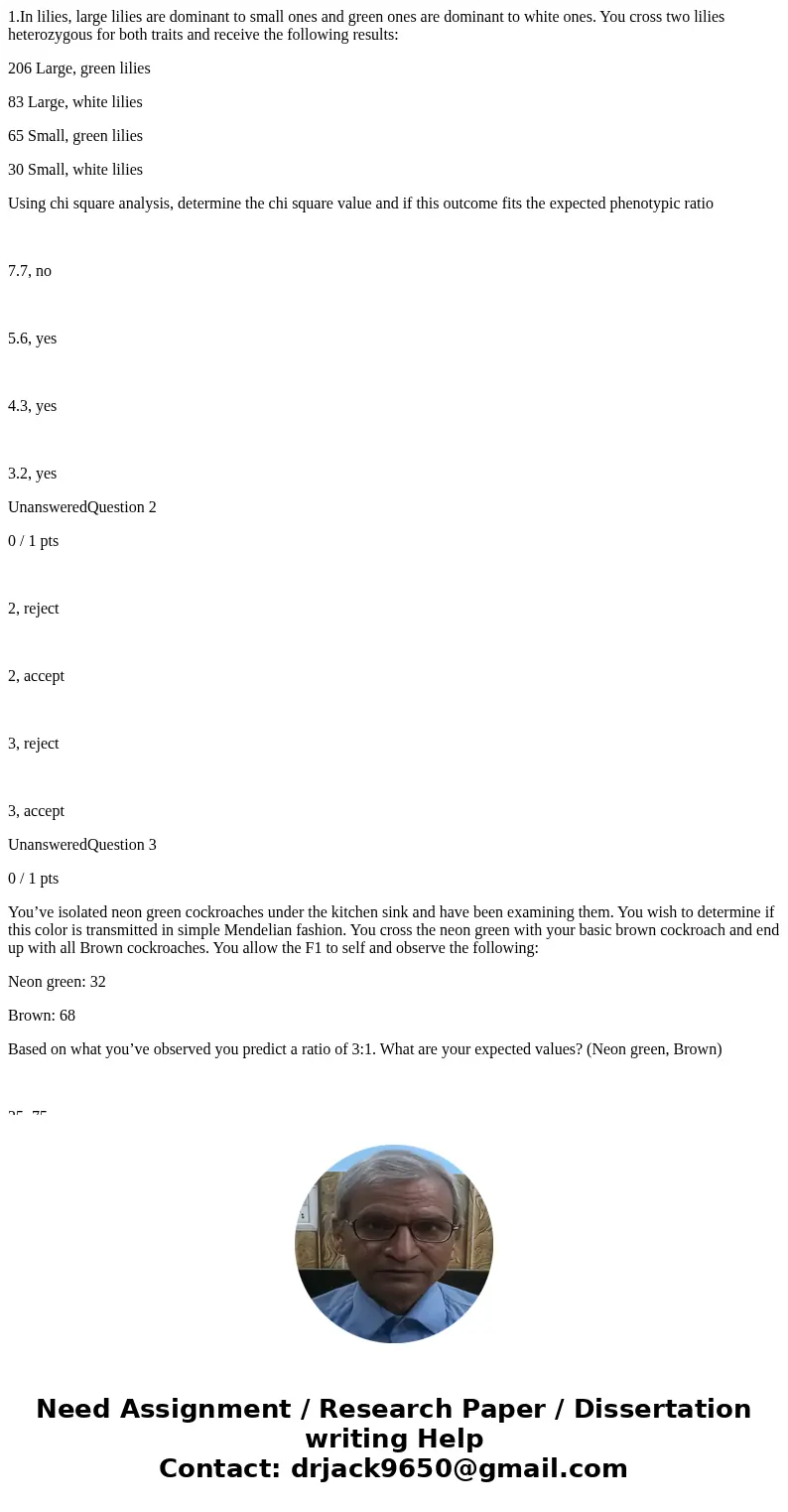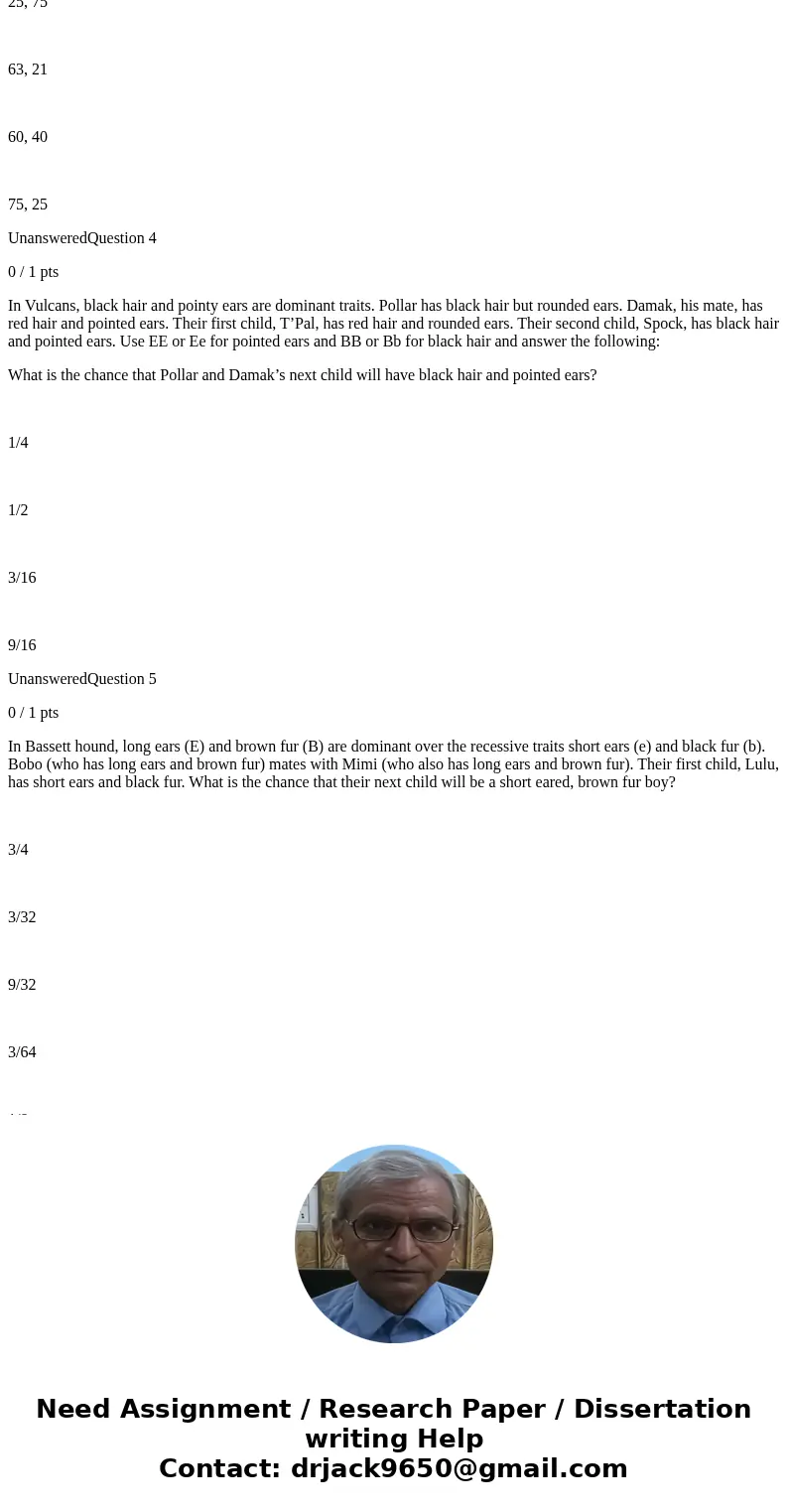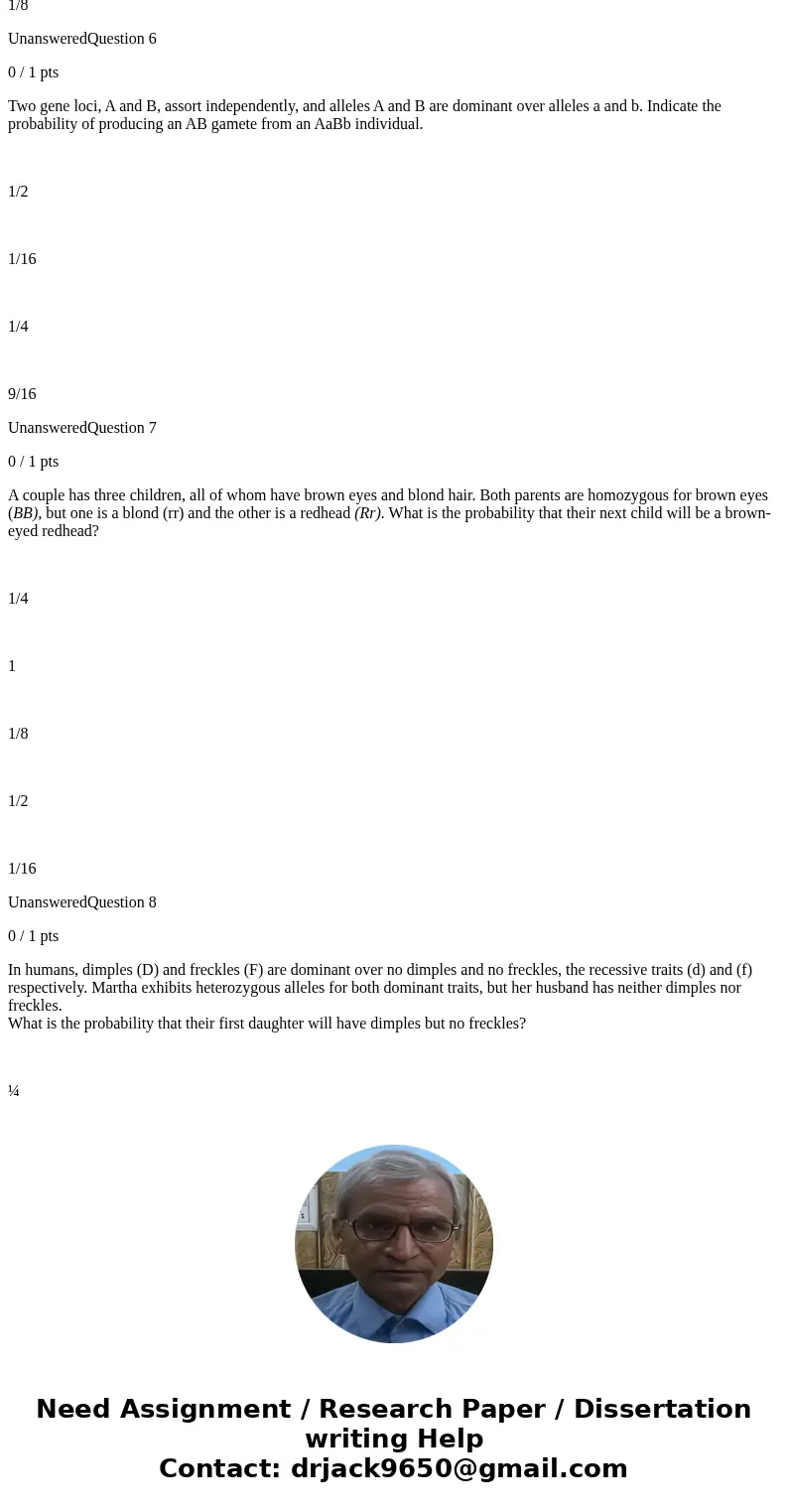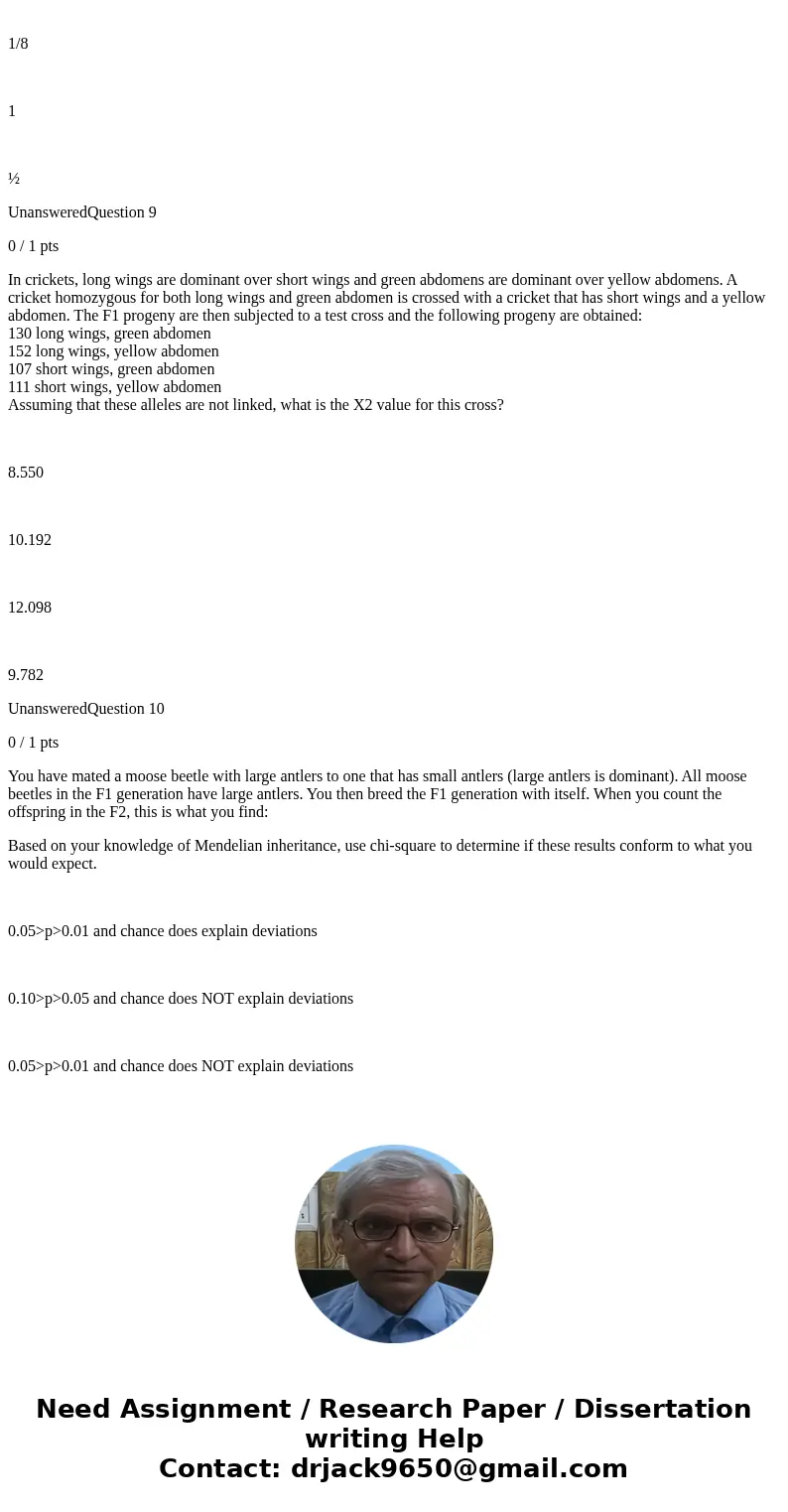1In lilies large lilies are dominant to small ones and green
1.In lilies, large lilies are dominant to small ones and green ones are dominant to white ones. You cross two lilies heterozygous for both traits and receive the following results:
206 Large, green lilies
83 Large, white lilies
65 Small, green lilies
30 Small, white lilies
Using chi square analysis, determine the chi square value and if this outcome fits the expected phenotypic ratio
7.7, no
5.6, yes
4.3, yes
3.2, yes
UnansweredQuestion 2
0 / 1 pts
2, reject
2, accept
3, reject
3, accept
UnansweredQuestion 3
0 / 1 pts
You’ve isolated neon green cockroaches under the kitchen sink and have been examining them. You wish to determine if this color is transmitted in simple Mendelian fashion. You cross the neon green with your basic brown cockroach and end up with all Brown cockroaches. You allow the F1 to self and observe the following:
Neon green: 32
Brown: 68
Based on what you’ve observed you predict a ratio of 3:1. What are your expected values? (Neon green, Brown)
25, 75
63, 21
60, 40
75, 25
UnansweredQuestion 4
0 / 1 pts
In Vulcans, black hair and pointy ears are dominant traits. Pollar has black hair but rounded ears. Damak, his mate, has red hair and pointed ears. Their first child, T’Pal, has red hair and rounded ears. Their second child, Spock, has black hair and pointed ears. Use EE or Ee for pointed ears and BB or Bb for black hair and answer the following:
What is the chance that Pollar and Damak’s next child will have black hair and pointed ears?
1/4
1/2
3/16
9/16
UnansweredQuestion 5
0 / 1 pts
In Bassett hound, long ears (E) and brown fur (B) are dominant over the recessive traits short ears (e) and black fur (b). Bobo (who has long ears and brown fur) mates with Mimi (who also has long ears and brown fur). Their first child, Lulu, has short ears and black fur. What is the chance that their next child will be a short eared, brown fur boy?
3/4
3/32
9/32
3/64
1/8
UnansweredQuestion 6
0 / 1 pts
Two gene loci, A and B, assort independently, and alleles A and B are dominant over alleles a and b. Indicate the probability of producing an AB gamete from an AaBb individual.
1/2
1/16
1/4
9/16
UnansweredQuestion 7
0 / 1 pts
A couple has three children, all of whom have brown eyes and blond hair. Both parents are homozygous for brown eyes (BB), but one is a blond (rr) and the other is a redhead (Rr). What is the probability that their next child will be a brown-eyed redhead?
1/4
1
1/8
1/2
1/16
UnansweredQuestion 8
0 / 1 pts
In humans, dimples (D) and freckles (F) are dominant over no dimples and no freckles, the recessive traits (d) and (f) respectively. Martha exhibits heterozygous alleles for both dominant traits, but her husband has neither dimples nor freckles.
What is the probability that their first daughter will have dimples but no freckles?
¼
1/8
1
½
UnansweredQuestion 9
0 / 1 pts
In crickets, long wings are dominant over short wings and green abdomens are dominant over yellow abdomens. A cricket homozygous for both long wings and green abdomen is crossed with a cricket that has short wings and a yellow abdomen. The F1 progeny are then subjected to a test cross and the following progeny are obtained:
130 long wings, green abdomen
152 long wings, yellow abdomen
107 short wings, green abdomen
111 short wings, yellow abdomen
Assuming that these alleles are not linked, what is the X2 value for this cross?
8.550
10.192
12.098
9.782
UnansweredQuestion 10
0 / 1 pts
You have mated a moose beetle with large antlers to one that has small antlers (large antlers is dominant). All moose beetles in the F1 generation have large antlers. You then breed the F1 generation with itself. When you count the offspring in the F2, this is what you find:
Based on your knowledge of Mendelian inheritance, use chi-square to determine if these results conform to what you would expect.
0.05>p>0.01 and chance does explain deviations
0.10>p>0.05 and chance does NOT explain deviations
0.05>p>0.01 and chance does NOT explain deviations
0.10>p>0.05 and chance does explain deviations
Quiz Score: 0 out of 10
Quiz Submissions
Attempt 1: 0
Temitope Adetunji has no attempts left
Back to Quiz
How to use UMD Canvas
| beetles with large antlers: | _______69 |
| beetles with small antlers: | _______38 |
Solution
Answer:
There are lots of questions in a single window. Calculation of each takes Hugh time, which is not possible in given time. However, for the first question, 4.3 is the phenotypic ratio between large lilly with green colour.





 Homework Sourse
Homework Sourse